Dye-sublimation Printing Technology
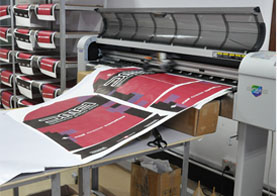
a) Dye-Sublimation Printer. CyclingEasy.com employs the sophisticated dye-sublimation printer. A dye-sublimation printer (or dye-sub printer) is a computer printer which employs a printing process that uses heat to transfer dye onto medium materials such as a plastic card, paper, or fabric. The sublimation name is applied because the dye transitions between the solid and gas states without going through a liquid stage. Many consumer and professional dye-sublimation printers are designed and used for producing photographic prints.
These are not to be confused with dye sublimation heat transfer imprinting printers, which use special inks to create transfers designed to be imprinted on polyester items.
Most dye-sublimation printers use CMYO (Cyan Magenta Yellow Overcoating) colors, which differs from the more recognized CMYK colors in that the black dye is eliminated in favour of a clear overcoating. This overcoating (which has numerous names depending on the manufacturer) is also stored on the ribbon and is effectively a thin laminate which protects the print from discoloration from UV light and the air, while also rendering the print water-resistant.
b) Ink: Italy Sublimation Ink
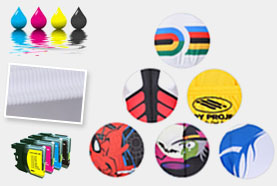
The sublimation inks are ink-jet printing inks especially designed to be used on digital printers having piezo printing heads. They are particularly suitable for digital printing on polyester textiles used in sports and outer wear, as well as for a variety of plastic substrates used in the manufacturing of skis, snowboards, skateboards, windsurfs, and other products. The image is printed on coated paper and then transferred (heating temperature around 210°C) on polyester fabrics, or mixed synthetic fabrics containing polyester in a min. quantity of 60%.
Fabrics
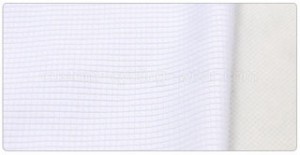 a) Polyester
a) Polyester
Polyester is a category of polymers which contain the ester functional group in their main chain. Although there are many polyesters, the term “polyester” as a specific material most commonly refers to polyethylene terephthalate (PET). Polyesters include naturally occurring chemicals, such as in the cutin of plant cuticles, as well as synthetics through step-growth polymerization such as polycarbonate and polybutyrate. Natural polyesters and a few synthetic ones are biodegradable, but most synthetic polyesters are not.
b) Lycra
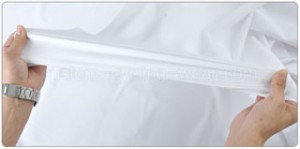
Lycra, also called spandex or elastane, is a synthetic fibre known for its exceptional elasticity. It is strong, but less durable than natural Latex, its major non-synthetic competitor. It is a polyurethane-polyurea copolymer that was co-invented in 1959 by chemists C. L. Sandquist and Joseph Shivers at DuPont’s Benger Laboratory in Waynesboro, Virginia. When first introduced, it revolutionized many areas of the clothing industry.
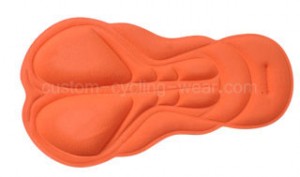 c) CoolMax
c) CoolMax
Coolmax is a series of moisture-wicking technical fabrics developed in 1986 by DuPont Textiles and Interiors (now Invista). The fabrics employ specially-engineered polyester fibres to improve “breathability” compared to natural fibres like cotton. Coolmax fibres are not round, but are slightly oblong in cross-section with grooves running lengthwise along the threads. They are manufactured in either a tetrachannel or hexachannel style. The series of closely spaced channels creates capillary action that wicks moisture through the core and out to a wider area on the surface of the fabric which increases evaporation.
d) Fleece
Fleece is basically a synthetic, 100% polyester fabric with an altered ‘structure.’ This altered ‘structure’ facilitates moisture transfer through the fabric – some will say ‘absorb’ through the fabric. Polyester fabric, in and of itself, does not absorb moisture at all.. Instead fleece wicks moisture away from the skin to its outer surface where it can do one of two things: 1) Spread out and evaporate if exposed to air. 2) Absorb into another fabric-usually a cotton ‘soaker’ of some sort.
